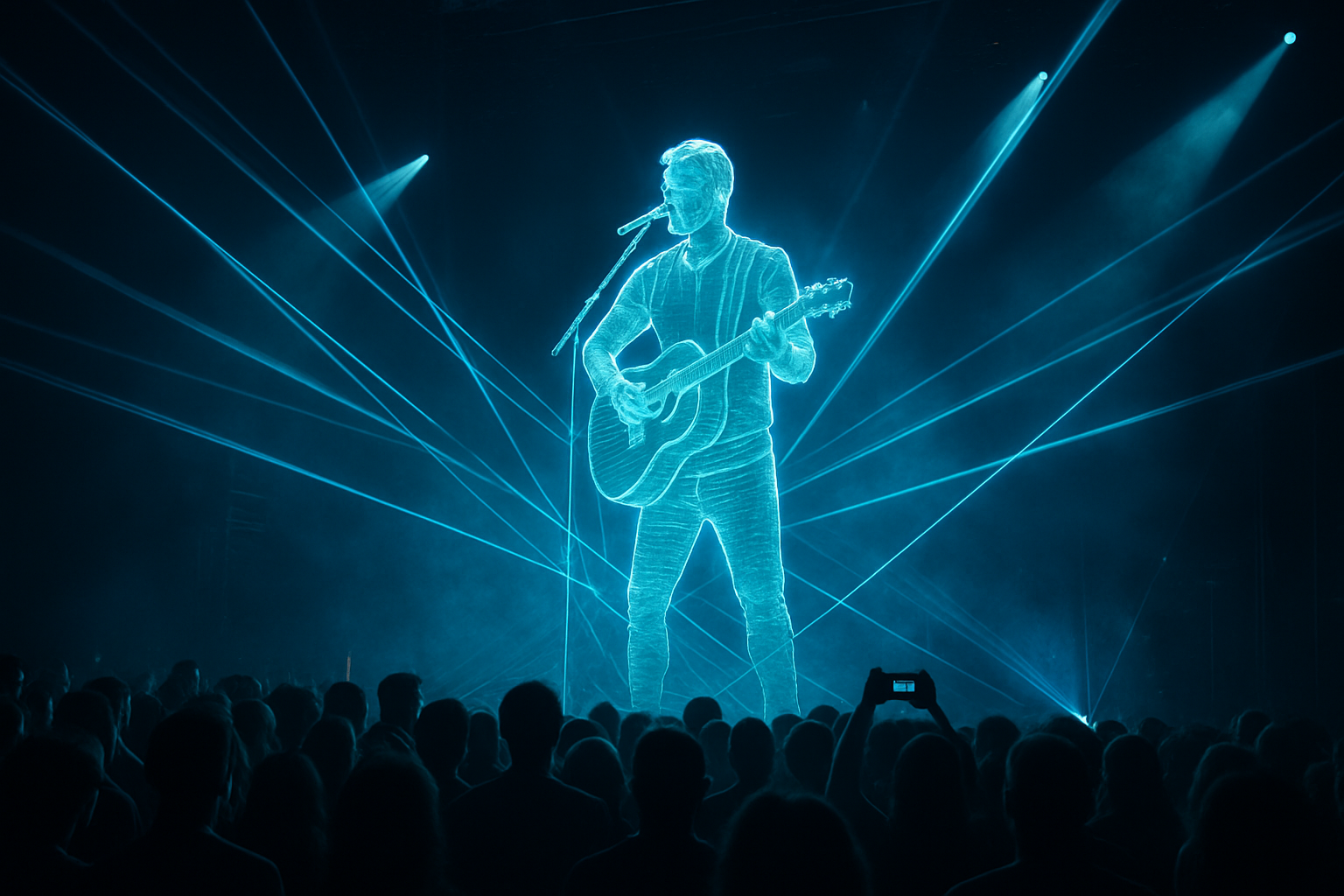Holographic Concerts: The Future of Live Music
In a world where technology continues to reshape our experiences, the music industry stands on the brink of a revolutionary transformation. Holographic concerts, once a figment of science fiction, are now becoming a tangible reality, promising to redefine the landscape of live performances. This cutting-edge technology is not only bringing deceased artists back to the stage but also opening up new possibilities for living musicians to connect with audiences across the globe. As we delve into this phenomenon, we'll explore its implications for the music industry, artists, and fans alike.

Pioneering Performances
The first major holographic concert that caught the world’s attention was the 2012 Coachella performance featuring a hologram of the late rapper Tupac Shakur. This groundbreaking event showcased the potential of the technology, sparking both awe and controversy. Since then, holographic performances have featured other departed icons such as Roy Orbison, Maria Callas, and Whitney Houston, allowing new generations to experience their artistry in a live setting.
Technical Marvels Behind the Magic
The creation of a holographic concert is a complex process involving multiple disciplines. It begins with capturing high-resolution footage of the performer, either from archival material for deceased artists or new recordings for living ones. This footage is then processed and enhanced using advanced computer graphics techniques. The final projection relies on a combination of high-powered lasers, specialized screens, and carefully calibrated lighting to create the illusion of a three-dimensional figure on stage.
Implications for the Music Industry
Holographic concerts are poised to revolutionize the music industry in several ways. For record labels and estates of deceased artists, it offers a new revenue stream and a way to keep legacies alive. For living artists, it provides an opportunity to perform in multiple locations simultaneously, potentially increasing their reach and earnings. However, this technology also raises questions about authenticity, artistic integrity, and the value of live performances.
Ethical Considerations and Controversies
The rise of holographic concerts has not been without controversy. Critics argue that posthumous performances exploit the legacies of deceased artists, raising ethical concerns about consent and artistic intention. There are also debates about the authenticity of the experience for audiences and whether these performances can truly capture the essence of a live show. As the technology evolves, these ethical considerations will likely remain at the forefront of discussions in the music industry.
The Fan Experience
For music fans, holographic concerts offer a unique opportunity to see performances they might otherwise never experience. This is particularly significant for younger generations who can now witness legendary artists in a live setting. However, the reception among fans has been mixed, with some embracing the technology as a new form of entertainment, while others view it as a poor substitute for traditional live performances.
The Future of Holographic Concerts
As technology continues to advance, the possibilities for holographic concerts are expanding. Future developments may include more interactive elements, allowing holographic performers to respond to audience reactions in real-time. There’s also potential for integration with virtual and augmented reality technologies, creating even more immersive experiences. Some experts predict that holographic concerts could become a standard offering alongside traditional live performances, providing artists and fans with more options for engagement.
Impact on Music Tourism and Venues
Holographic concerts are also reshaping the landscape of music tourism and venue management. Cities and venues that were once limited by geography or capacity can now host performances by top-tier artists, potentially boosting local economies. This technology also opens up possibilities for new types of venues specifically designed for holographic performances, blending digital and physical spaces in innovative ways.
Challenges and Limitations
Despite the excitement surrounding holographic concerts, there are still significant challenges to overcome. The technology remains expensive and complex, limiting its widespread adoption. There are also technical limitations in terms of the realism and interactivity of the holograms. Additionally, legal and rights issues surrounding the use of an artist’s likeness and performances continue to be complex, particularly for posthumous concerts.
Conclusion
Holographic concerts represent a fascinating intersection of technology, art, and entertainment. As this technology continues to evolve, it has the potential to fundamentally alter how we experience live music. While it may never fully replace the energy and connection of a traditional live performance, holographic concerts offer new possibilities for artistic expression and audience engagement. As the music industry navigates this new frontier, it will be crucial to balance innovation with respect for artistic integrity and the essence of live music. The coming years will undoubtedly bring further developments in this field, shaping the future of live entertainment in ways we are only beginning to imagine.





